EXECUTIVE SUMMARY:
The VA-111 Shkval torpedo and its descendants are supercavitating torpedoes originally developed by the Soviet Union. They are capable of speeds in excess of 230 mph. Modern torpedoes have three design features that allow them to move through water at high speeds: 1) specially shaped nose (cavitator) that initiates the supercavitation gas bubble, 2) a gas generator to maintain the gas bubble and 3) a propulsion system to achieve and maintain high speeds. It seems reasonable that underwater projectiles should have the same three characteristics.
A firearm projectile, whether small arms or cannon would require the same three features to obtain high speeds underwater. Currently, the US Navy has achieved 100 meters underwater with zero kinetic energy at the target. We present two new and one improved design packages that incorporates all three features and is presented so that its components has the ability to evolve with yet to be described technologies. Based on physics and fluid mechanic principles, the three designs should achieve 1000 meters with yet to be determined kinetic energy at the target.
INTRODUCTION:
A torpedo, using the physics of supercavitation to create a gas bubble around it, reduces drag, thus allowing it to move through water at a high velocity. The Russian VA-111 torpedo achieves speeds in excess of 230 miles per hour1. This is accomplished by three components necessary for supercavitation: 1) a specially shaped nose (cavitator) that initiates the supercavitation gas bubble, 2) a gas generator with storage tanks that maintains the gas bubble and 3) a propulsion system to achieve and maintain high speeds.
To transfer this technology to underwater small arms and ammununition, in the early 1960s, the Russians invented an underwater pistol platform (SPP-1) that shot a steel dart (18 caliber) that was lethal to 17 meters. Next, they produced an underwater rifle platform (ASP) that had lethality to 30 meters. The action was modified to work in water and the barrel’s bore was smooth so as not to slow down the projectile’s speed. Out of water, lethality increased to about 50 meters.
What followed was two generations of rifles. The first generation shot both water and air ammunition that was intended for both air and water environments. It had a smooth bore. The second generation shot one type of ammunition design, which accommodate both air and water environments. It used a reduced rifling depth in the bore. The firing platform, based on a modified A-91 bullpup design shooting a new 5.45x39mm cartridge called the 5.45x39mm MGTS, and used existing AK magazines. Note: several names for this cartridge appear in the literature. The lethality is about 25 meters. The evolution of design stopped, and the designs were released commercially.
The U.S. Military became interested in the advancement of these commercial designs and started a Multi Environmental Ammunition (MEA) program2. The MEA program was based on three calibers, 5.56x45mm NATO, 7.62x51mm NATO and the .50 BMG. Rather than using lethality as a measurement of advancement, accuracy was used instead. In previously mentioned calibers, in ascending order, the three were accurate to 15, 25 and 60 meters underwater.
Recently, Dennis Omanoff became the new CEO of TPW and asked for help, which I agreed. I have a new basic design that addresses: 1) new cavitator design that creates the supercavitation bubble, 2) innovative design that maintains the supercavitation bubble and 3) new propulsion system located with the projectile that extends the distance to 1000 meters plus.
OVERVIEW OF NEW DESIGNS:
Ideal Metal Alloy for Underwater Projectiles: My review of the scientific literature has not convinced me that a tungsten alloy would not be the ideal material for an underwater projectile. We will use a tungsten alloy in our projectile designs but keep in mind the possibilities of other alloys.
The Role of Tungsten Heavy Alloys (WHA). The sintered structure of a common WHA is two-phase, consisting of a linked network of tungsten spheroids contained in the ductile matrix phase, typically Ni-Fe or Ni – Cu (Figure 1).
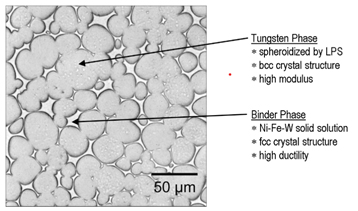
Figure 1. The sintered structure of Tungsten Heavy Alloy (WHA)
A principal advantage of WHAs over pure tungsten is their ability to be readily machined into complex geometries using common metal-cutting tools and techniques. Note: We has a full-time metallurgist (Ph.D.) on our team whose specialty is tungsten.
Essential Designs for an Ideal Underwater Projectile: To date, scientific literature supports at least three essential designs required for an ideal underwater projectile. The first is a cavitator (nose) that initiates the supercavitation bubble. The second is a sources of gas that maintains the supercavitation bubble and the propulsion system that pushes the projectile through the water. However, we must consider that there may be a fourth or fifth design, yet to be discovered.
First New Design: Cavitator. The first design serves as the nose of the projectile. The literature indicate that a sharp edge around its perimeter to initiate the bubble1. A flat disc or a cone have been studied extensively, especially by modelling. We will use a disc – better name is meplan of varying thickness depending on the caliber of the projectile and the desired closeness of the bubble to the ogive of the projectile. The design will have varying thicknesses as is caliber-dependent and with the intent of creating a supercavitation bubble that does not touch the projectile.
Second New Design: Gas generating system. We have designed a special composite sabot made of a polymer and with a special aluminum powder that when combined with water will generate hydrogen gas. The powder is combined with the polymer that when opened by the special barrel rifling will open the powder to the water resulting in the generation of hydrogen gas. The projectile will have left the barrel before this to initiate the supercavitation bubble. The hydrogen gas generated by the aluminum powder to maintain the supercavitation bubble until the target.
Third New Design: Propulsion system. The third design is a propulsions system for underwater small arms and cannon projectiles. The invention has at least one or two more chambers located in the base of the projectile that hold dry fuel, in powder from that carries its own oxygen so that it will burn underwater to provide forward thrush to the projectile. The projectile is part of the cartridge which is made up on a cartridge case, powder in the case and primer to ignite the cartridge case powder. The first prototype cartridge will determine the best fuel for a given caliber for one or more chambers located in the base of the projectile.
Design Evolution during Prototype Testing. We anticipate a number of variables to arise during prototype testing. We are capable of managing such changes to evolve the design. Our final goal is an underwater projectile that achieves 1000 meters distance.
NEW DESIGNS:
Background. The designs are illustrated in the .50 BMG caliber but can be applied to any caliber. After our design is completed, we recommend a new caliber for combat. It is our .608 (15mm) caliber that can be transformed from its current specification (Appendix I) to our new swimmer design.
Cavitator Design. The cavitator design is based on the meplat design found in atmospheric projectile designs. Note: the thickness concept is not based on actual experiments with supercavitation bubbles but on studies with air drag studies such as the bow shock wave studies. I am predicting that since both air and water are fluids, there should be some overlapping similarities. If I am wrong, one thickness for the meplat will be selected. If I turn out to be right, we can use varying thicknesses to slow down the phenomenon of tail-slapping2.
The cavitor is called a Meplat Unit (MU) whose thickness is caliber dependent and yet to be determined (Figure 2). Also, to be determined is the angle separating the ogive of the projectile from the MU. To address these variables, design modeling would be the best approach and we would have to subcontract to have this done.
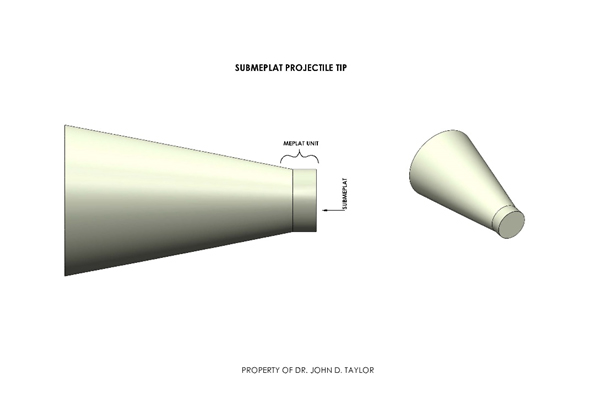
Figure 2. The projectile’s cavitaor is called a meplat as a as a ‘meplat unit.’ Thickness varies depending upon the caliber and
ogive of the projectile. The significance of the design is to prevent the projectile from
touching the supercavitation bubble.
Figure 3 shows the entire projectile with the MU in relation to the ogive of the projectile. The RS is located in the mid region to the rear is the projectile. The RS is composed of a polymer filled with NAP that will generate hydrogen gas when exposed to water7. Such gas will maintain the supercavitation bubble until it hits the target. Since this design will use a smooth bore barrel, the outer diameter (OD) of the RiderSabot™ will be slightly larger than the projectile’s OD and the bore’s inner diameter (ID), the composite RiderSabot™ will keep the projectile centered in the bore while at the same time, prevent propulsion gases from going around the sides and getting in front of the projectile.
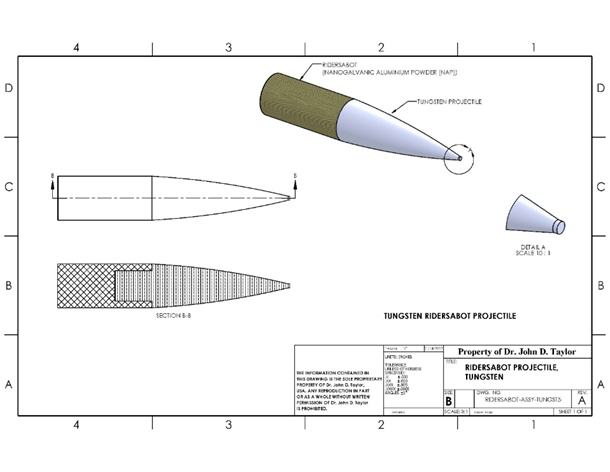 Figure 3. The entire projectile with its RiderSabot, tungsten core and ‘meplat unit’
Figure 3. The entire projectile with its RiderSabot, tungsten core and ‘meplat unit’
Gas Generating System Design. We present a novel concept is a gas generation system to maintain the supercavitation bubble as the projectile goes through the water. This system is the part of a projectile that engraves on the barrel’s rifling. We call this component part the RiderSabot™ (RS) because it stays with the projectile to the target. It must be composed of a material that will engrave on the barrel rifling’s lands and groove. We envision a polymer composite having embedded in it an alkali metal powder that generates hydrogen gas when exposed to water4. Our first choice with prototypes testing will be Nanogalvanic Aluminum Powder (NAP) invented by the US Army Research Laboratory (ARL)5. By definition this is a powder that consists of galvanic cells in nanoscale with aluminum as the anode, coupled with another element acting as the cathode; galvanic corrosion occurs when the two dissimilar metals contacts one another in presence of an electrolytic liquid such as water firming a galvanic couple and produces electricity. This in turn pulls electrons from the water causing it to breakdown separating the hydrogen from the oxygen to produce. hydrogen gas. Because the reaction occurs on a nanoscale, the powder does not form an oxide on the aluminum’s surface thus allowing on-demand hydrogen fuel generation. Finally, the design includes a new barrel rifling system that engrave into RiderSabot™ which opens it to expose the NAP to water allowing the generation of hydrogen gas to maintain the supercavitation bubble until the projectile hits the target.
During prototype testing the amount of NAP per RiderSabot™ will be determine per caliber to maintain the supercavitation bubble. Our current intent is to use Nylon as the first polymer evaluated. We expect the prototype testing with answer the following questions:
- Whether or not, nylon is the ideal polymer for the composition of the RiderSabot.
- The concentration of NAP in the RiderSabot’s polymer mix to generate enough hydrogen gas to maintain a supercavitation bubble. Note: This depends on our innovative barrel design to release the NAP from the RiderSabot which will be described toward the end of this WP.
Propulsion System Design. The design has a chamber located at its base to hold the propellent. The propellent is held in place with a tin alloy disc with one or more holes. The number of holes may vary depending on the cartridge’s caliber and the type of propellent used. Figure 4 shows a disc with 5 holes.
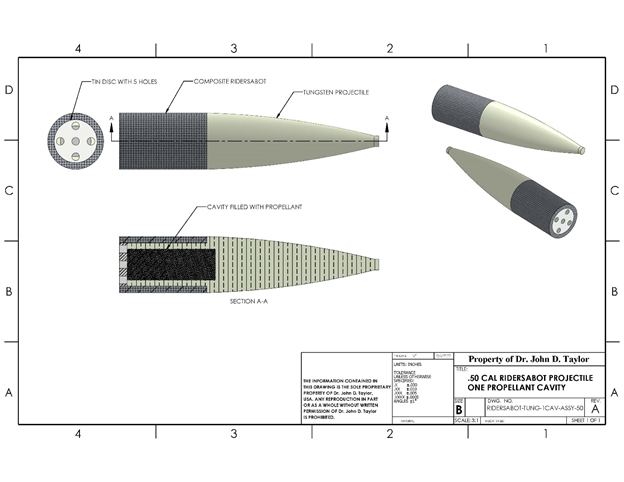 Figure 4 One chamber propellent system. The propellant is held in place by a tin disc with one or more holes.
Figure 4 One chamber propellent system. The propellant is held in place by a tin disc with one or more holes.
Illustration shows five holes. The purpose of the hole is to allow the flames from the bunning cartridge case powder to
ignite the projectile powder in the chamber. The disc’s thickness and number of holes will
depend on the caliber and type of powder used.
The thickness of the tin alloy disc is also dependent upon the cartridge caliber and the type of propellent used. The cartridge primer ignites the cartridge case powder yielding temperatures range from 200 to 464 C depending on the type of powder used. The melting point of a tin alloy is approximately 200 C. The intent of the design is to melt the tin alloy disc before the projectiles leave the barrel and ignite the propellant in the projectile. This will generate forward movement in the water. The type of propellant selected will burn in water.
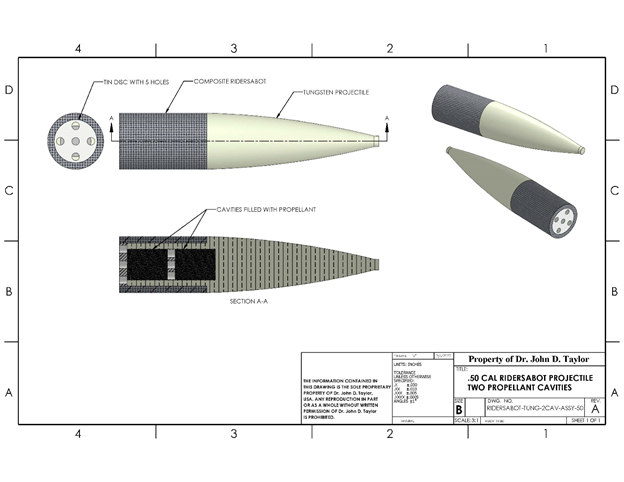 Figure 5 Two-chamber propellent system. The two chambers are separated by a tin disc with one or more holes.
Figure 5 Two-chamber propellent system. The two chambers are separated by a tin disc with one or more holes.
The purpose of the hole is to allow the flames from the bunning cartridge case powder to ignite the
projectile powder in the first chamber and then in the second chamber. The disc’s thickness and
number of holes will depend on the caliber and type of powder used.
The next design possesses two propellant chambers in tandem with a tin disc separating the two chambers (Figure 5). The design is intended to increase the range of the projectile underwater. The ignition of the propellant in the first chamber melts the second tin disc and thus ignites the propellent in the second chamber. The composite RiderSabot acts in an analogous manner to the one in Figure 3.
The next part of the design deals with the cartridge cases. The case is rifled as can be seen in Figures 4 & 5. The evolution of underwater rifles is based on smooth bore barrels. Barrel rifling slows down the projectile and thus reduces the distance achieved. Rifling within a cartridge case will introduce a gyroscopic spin to the projectile, a critical requirement for atmosphere shooting but to our knowledge, little is known with aquatic shooting.
INITIATION OF HYDROGEN GAS PRODUCTION:
New Barrel Design. The literature is convincing that a smooth bore barrel works best for underwater projectiles. Rifling engraving into the projectiles slows down the projectile in the barrel and there is no evidence that an underwater projectile requires a gyroscopic spin for stabilization in the water. Our second invention required a mechanism to release hydrogen gas from the polymer RiderSabot which has Nanogalvanic Aluminum Powder (NAP) embedded into the entire RiderSabot. When NAP is exposed to water, it generates hydrogen gas5. The barrel had a zone of rows of, parallel to the axis of the bore that will be engaged into the RiderSabot™ as the projectile passes through it (Figure 5).
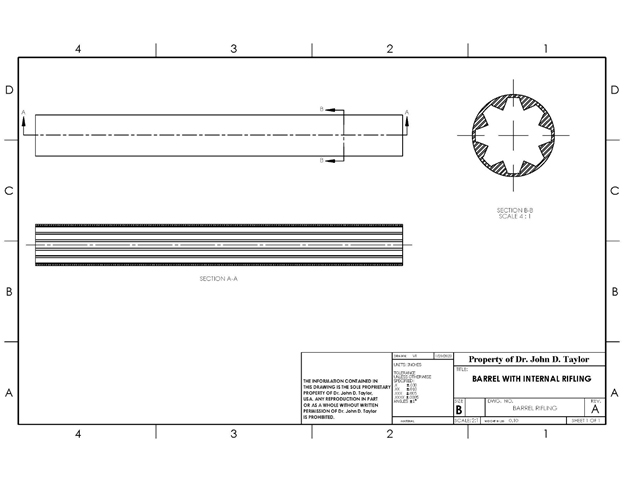 Figure 6. Longitudinal and cross section of a gun barrel where the lands and groove have been replaced by peaks and valleys.
Figure 6. Longitudinal and cross section of a gun barrel where the lands and groove have been replaced by peaks and valleys.
The peaks penetrate the RiderSabot to release NAP to the water which in turn generates hydrogen gas.
The barrel would have peaks and valleys rather than lands and grooves. The peaks would penetrate the RiderSabot releasing the NAP to the water. This in turn would generate hydrogen gas. The question arises whether we would need the peaks and valleys to run the full length of the barrel as does the lands and grooves with regular firearms barrels. During prototype testing we evaluate shorter regions of lands and groove to determine whether region length can be identified that would serve to fully release the NAP from the RiderSabot. The rest of the barrel, where peaks and valleys do not exist would be smooth bore which would not slow down the projectile’s velocity in the bore and thus outside of the bore. We suspect this may turn out to be caliber dependent.
POTENTIAL ISSUES ASSOCIATED WITH THE DESIGNS:
In the atmosphere, a shooter should be able to hit a target he can see, if he possesses the skills and the firearm performs properly. However, with water, marine or fresh the trick is to be able to see the target. For years, the military has developed ranging underwater targets, with sonar, but more recently their focus has changed to laser ranging which opens the possibility of 3-D laser imaging which currently exists8. Technology exists, but does it exist in real time? The U.S. Navy issued a solicitation dated 1.12.2022 entitled, High Resolution Underwater Optical Ranging9, more than likely they have solicitations out for optical ranging.
SIGNIFIDANDE OF THE DESIGN:
The significance of the design(s) we extend the maximum distance of an underwater projectiles from the current 100 meters to the potential of 1000 meters plus. This will not be easy as we must address unknowns during prototype testing to achieve our goals. Weaponization of U.S. Navy’s underwater drone ‘Orca’ would be ideal in our .608 (15mm) experimental caliber (Appendix I).
John D. Taylor, Ph.D.
Professor Emeritus
AAAS Fellow, Emeritus
REFERENCES & NOTES:
1Horak, V., Van, D. N., Van, D. D. Van, H. N., and L. D. Duc. 2018. Ballistics of Supercavitating Projectiles. Adv. Mil. Tech. https://aimt.cz/index.php/aimt/article/view/1243/279
2Zhao, X., Lyu, X. Lyu, X and D. Li. 2019. Modeling of the Tail Slap for an Underwater Projectile within Supercavitation. https://www.researchgate.net/journal/Mathematical-Problems-in-Engineering-1563-5147
3Chadwick, J. 2019. The US military is testing bullets that can be shot UNDERWATER to enable Navy SEALs to engage in submarine combat and sink enemy boats from below. Daily Mail https://www.dailymail.co.uk/sciencetech/article-7781209/US-military-testing-underwater-bullets-dont-slow-down.html.
4Dimension of .50 BMG Projectile Nose. Tungsten Parts Wyoming. Laramie, Wyo.
5Wei, Z., Duan, H., Weng, G. and J. He. 2020. Metals in polymers: hybridization enables new functions. Journal of Materials Chemistry C. https://pubs.rsc.org/en/journals/journalissues/tc#!recentarticles&adv
6Hames, J. M. 2018. New nanomaterial paves the way for green energy solutions. Army AL&T magazine.
https://www.army.mil/article/211271/new_nanomaterial_paves_the_way_for_green_energy_solutions
7Xiao, F., Yang, R., and Z. Liu. 2022. Active aluminum composites and their hydrogen generation via hydrolysis reaction: A review. Inter. J. Hyd. Engin., 47:365-386.
https://www.sciencedirect.com/science/article/abs/pii/S0360319921038568.
83-D at Depth. https://3datdepth.com/.
9High Resolution Underwater Optical Ranging. Office of Naval Research.
file:///C:/Users/John%20D.%20Taylor/Documents/Ghost%20Tactical%20WP/WP%20Underwater%20Platforms%20&%20Ammo/LIDAR/Navy%20-%2022.A%20STTR%20-%20High%20Resolution%20Underwater%20Optical%20Ranging.html
10Baker, B. 2019. Orca XLUUV: Boeing’s whale of an unmanned sub. Naval Technology. https://www.naval-technology.com/features/boeing-orca-xluuv-unmanned-submarine/
Appendix I
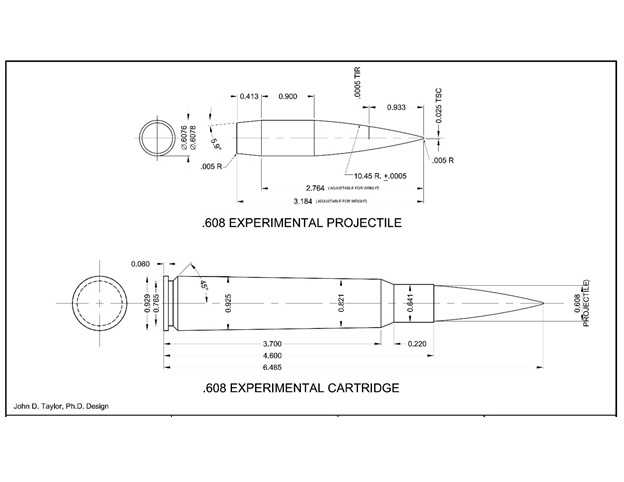
Specifications and dimensions of .608 (15mm) caliber that can be changed to our swimmer design based on supercavitation requirements.
special characteristics of supercavitation. This position is supported by only a maximum of 100 meters underwater.”